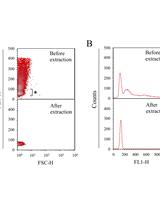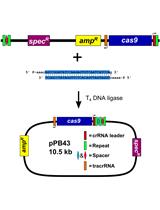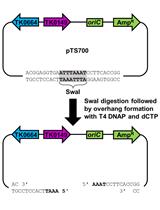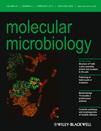- Submit a Protocol
- Receive Our Alerts
- Log in
- /
- Sign up
- My Bio Page
- Edit My Profile
- Change Password
- Log Out
- EN
- EN - English
- CN - 中文
- Protocols
- Articles and Issues
- For Authors
- About
- Become a Reviewer
- EN - English
- CN - 中文
- Home
- Protocols
- Articles and Issues
- For Authors
- About
- Become a Reviewer
Construction of Chromosomal In-Frame Deletion Mutants in Rhodobacter capsulatus
Published: Vol 3, Iss 4, Feb 20, 2013 DOI: 10.21769/BioProtoc.333 Views: 12989

Protocol Collections
Comprehensive collections of detailed, peer-reviewed protocols focusing on specific topics
Related protocols

Estimation of the Chromosomal Copy Number in Synechococcus elongatus PCC 7942
Satoru Watanabe and Hirofumi Yoshikawa
Jul 5, 2016 8124 Views

CRISPR/Cas9 Editing of the Bacillus subtilis Genome
Peter E. Burby and Lyle A. Simmons
Apr 20, 2017 20778 Views

Markerless Gene Editing in the Hyperthermophilic Archaeon Thermococcus kodakarensis
Alexandra M. Gehring [...] Thomas J. Santangelo
Nov 20, 2017 8038 Views
Abstract
Markerless chromosomal in-frame deletion mutants are often used to avoid polar effects, conserve antibiotic resistance markers or make multiple mutations. This protocol capitalizes on the sacB gene (lethal in the presence of sucrose), for selection against a single cross-over event, on a suicide vector (contains no Rhodobacter capsulatus compatible origin of replication). The bacterial strains, media and suicide vectors in this protocol are specific for R. capsulatus, but the concepts can be applied to other species.
Background
Materials and Reagents
- R. capsulatus recipient strain
- RCV broth
- RCV agar
- Sucrose
- L-malic acid (Sigma-Aldrich, catalog number: 240176 )
- Thiamine hydrochloride (Sigma-Aldrich, catalog number: T1270 )
- Escherichia coli cloning strain capable of conjugation (e.g. S17-1)
- Suicide plasmid, such as pZJD29A (Z. Jiang and C. E. Bauer, unpublished strain construction), that contains the sacB gene and an antibiotic resistance gene, but no Rhodobacter capsulatus compatible origin of replication. The suicide plasmid pZJD29A is a derivative of pJP5603 and has a RK6-based origin of replication making it a “universal” suicide plasmid (Penfold and Pemberton, 1992).
- Appropriate antibiotic (resistance specified by the suicide plasmid)
- RCV broth/agar (Beatty and Gest, 1981) (see Recipes)
- Trace element solution (in 250 ml dH2O) (see Recipes)
Equipment
- 30 °C shaker
- 30 °C incubator
- Test tubes
- Petri plates
Procedure
- Subclone ~1 kb of upstream sequences plus the first several codons of the gene to be deleted into pUC19 or similar vector. In the resulting plasmid, clone the last several codons of the gene to be deleted plus ~1 kb of downstream sequences. Amplify this whole segment by PCR and clone into a suicide plasmid (such as pZJD29A), which contains sacB and an antibiotic resistance gene. Be sure to design your construct so that the first and last several codons of the gene to be deleted are in-frame. This cloning is done in E. coli.
- Conjugate the deletion construct into R. capsulatus (refer to “Bacterial Conjugation of Rhodobacter capsulatus” protocol) (Leung and Beatty, 2013).
- Streak the conjugated R. capsulatus on RCV agar plate supplemented with the appropriate antibiotic (i.e. the antibiotic resistance on the suicide plasmid). Colonies that grow represent single cross-over events.
- Confirm single cross-over event by PCR, or streaking colonies on RCV, RCV + antibiotic, and RCV + 10% sucrose. They should grow on RCV and RCV + antibiotic, but not RCV + 10% sucrose because the sacB gene results in toxicity in the presence of sucrose and only single crossover events will maintain the sacB gene.
- Inoculate 10 ml of RCV (NO antibiotic) with a colony that is confirmed to have a single cross-over and incubate at 30 °C, shaking at 250 rpm for 3-5 days.
- Spin down 1 ml of this culture in a microcentrifuge tube, decant supernatant and resuspend cell pellet in 100 μl RCV broth.
- Spread cell suspension on a RCV + 10% sucrose agar plate, incubate at 30 °C for 4-7 days.
- Colonies that grow should be restreaked on RCV, RCV + antibiotic, and RCV + 10% sucrose. The double cross-over (i.e. chromosomal in-frame deletion mutant) should grow on RCV and RCV + 10% sucrose but not on RCV + antibiotic because the second crossover event results in the loss of the sacB gene and the antibiotic resistance gene.
- Confirm chromosomal in-frame deletion mutant by PCR because the second cross over can either result in WT or the KO, which will both grow on RCV and RCV + 10% sucrose but not on RCV + antibiotics.
Recipes
- RCV broth/agar (Beatty and Gest, 1981) (in 1 L; autoclaved)
4 g D, L-malic acid
1 g (NH4)2SO4
10 mM potassium phosphate buffer
200 mg MgSO4.7H2O
75 mg CaCl2.2H2O
12 mg FeSO4.7H2O
20 mg Na2EDTA
1 ml trace element solution
1 mg thiamine hydrochloride
pH adjusted to 6.8 with NaOH before autoclaving
(for agar add 1.5% agar)
- Trace element solution (in 250 ml dH2O)
0.7 g H3BO3
398 mg MnSO4.H2O
188 mg Na2MoO4.2H2O
60 mg ZnSO4.7H2O
10 mg Cu(NO3).3H2O
Acknowledgments
The development of this protocol was funded by a grant to J.T.B. from the Canadian Institutes of Health Research. This protocol was adapted from protocols developed by Beatty and Gest (1981), and Penfold and Pemberton (1992).
References
- Beatty, J. T. and H. Gest (1981). Generation of succinyl-coenzyme A in photosynthetic bacteria. Arch Microbiol 129(5): 335-340.
- Leung M.M., Brimacombe C.A., Spiegelman G.B., and Beatty J.T. (2012) The GtaR protein negatively regulates transcription of the gtaRI operon and modulates gene transfer agent (RcGTA) expression in Rhodobacter capsulatus. Mol Microbiol 83(4):759-74.
- Leung, M. and Beatty, J. T. (2013). Bacterial Conjugation in Rhodobacter capsulatus. Bio-protocol 3(13): e804.
- Penfold, R.J. and Pemberton, J.M (1992). An improved suicide vector for construction of chromosomal insertion mutations in bacteria. Gene 118 (1): 145-146.
Article Information
Copyright
© 2013 The Authors; exclusive licensee Bio-protocol LLC.
How to cite
Leung, M. M. and Beatty, J. T. (2013). Construction of Chromosomal In-Frame Deletion Mutants in Rhodobacter capsulatus. Bio-protocol 3(4): e333. DOI: 10.21769/BioProtoc.333.
Category
Microbiology > Microbial genetics > Mutagenesis
Microbiology > Microbial genetics > DNA > Chromosomal
Molecular Biology > DNA > Mutagenesis
Do you have any questions about this protocol?
Post your question to gather feedback from the community. We will also invite the authors of this article to respond.
Tips for asking effective questions
+ Description
Write a detailed description. Include all information that will help others answer your question including experimental processes, conditions, and relevant images.
Share
Bluesky
X
Copy link









